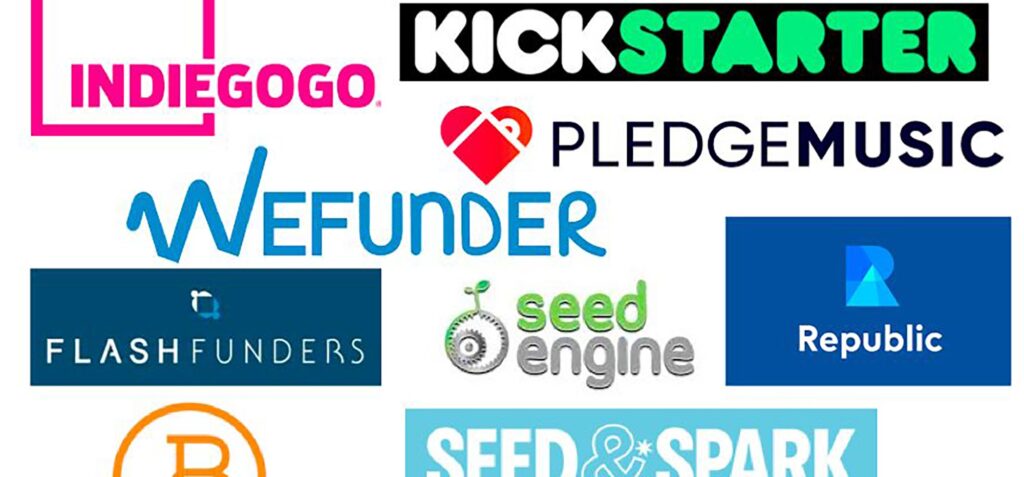It’s becoming harder and harder to finance your films no matter where you are in the world. The normal funding agencies don’t have as much money to shell out to as many projects anymore so we have to find new ways of raising money to make our films moving forward.
Sure, there is the chance that you might meet someone or some company that might be willing to invest their money into your film. The problem is, and I will be the first one to admit, that these people are really hard to find. I have found a few over the years but in almost every case when it comes time to sign on the dotted line they either disappear never to be heard from again or they just decide it’s too risky for them to get involved and then walk away. In Canada it’s really hard to get a private investor to invest money into your film when it’s 100% risk with no guaranteed rate of return. Unless you can prove that they will see their money back, which depending on the film may not be possible, it is hard to convince them to take the risk.
There are new and creative ways for filmmakers trying to raise money for their films. Casey Walker (Little Bit Zombie) raised a significant amount of money for his film by selling each frame of the film to potential investors though an internet site that he created. The money that was raised in combination with tax credits and other funding sources allowed Chris to make his film become a reality. James Cooper (Elijah The Prophet) used Kickstarter to try and raise money to shoot his short film. He asked for $20,000 and in the end was able to raise $21,600. Because of his successful experience he wrote a book entitled “Kickstarter for Filmmakers” that is available for any e-reader and I encourage you to read it as it’s a great tool for you to use. You can also contact James at www.james-cooper.ca
There are two main sites out there that filmmakers use to help raise money for their films – Kickstarter and Indiegogo. The issue with Kickstarter is that you must have a U.S. Mailing address and also if you don’t reach your fund raising goal you don’t get any of the money that you have raised. As for Indiegogo any money that you raise you get to keep with the exception of a percentage that goes to Indiegogo. Personally I think it’s too much of a risk to use Kickstarter for the simple reason that if you don’t hit your goal your get nothing. I know a lot of filmmakers that came within a few thousand dollars of their target and walked away with ziltch.
You have to also know that the majority of the money raised on these sites is usually raised in the first week and the last week of the campaign. So the key is to find interesting ways to keep your audience involved and to get their friends, family etc involved in your campaign. This can be done by regular blogging, video blogs, updates on the film, contests, whatever you can introduce that can engage your audience to not only donate but also stay involved and attract more of an audience. Conversation is the best form of advertising…the more conversation people are having about what you are doing the more likely your campaign will be successful.
Awards (prizes) are also a very important key to any good crowd sourcing campaign. The awards people will receive depending on the level of contribution they make to the campaign has to be really great…giving your audience the REAL incentive to contribute is invaluable. Awards need to be fun and stuff that they would appreciate getting for their donation. One very important point is to NOT offer anyone a producing credit as this will affect your tax credits!
I could go on for days about crowd sourcing as a way to help finance your film but there are other really great resources out there like James’ book. Also please check out the recent study by Nordicity contracted by the Canadian Media Fund:
http://www.nordicity.com/press_releases/html/2012-09/2a.html
http://www.nordicity.com/reports/CMF-Crowdfunding-Study.pdf
I am seeing first-hand the dedication required for crowd-funding campaigns with a new documentary I am involved in called “30 Ghosts”. The doc will be a textured yet entertaining chronicle of rural Ontario horse farmer and part-time paranormal-investigator Kim Hadfield, over a year of intense struggle as she pursues her dream of proving to mankind that ghosts exist. In attempting to raise awareness and capital to complete to complete our film we have teamed with Doc Ignite, HotDocs’ own Indiegogo-likecrowd funding service, a crowd-funding arm for Canadian docs. Participating in Doc Ignite and HotDocs allows us to truly target the passionate and dedicated documentary community around the world, and bring them on board in a big way. But this is easier said than done, and will require constant creativity and vigilance from myself and the producer/director, Sean Cisterna. Our introductory video is just the beginning, the real test will be if we can create and sustain the interest in our film necessary to hit our funding target.
Please check out our 30GHOSTS Doc Ignite campaign at:
http://www.hotdocs.ca/docignite/project/30Ghosts
Crowd sourcing can be a great way to raise financing for your film but remember there’s more to it that just posting the campaign up on the site. It requires constant (and I mean constant) attention to make it pay off.
Good luck!
